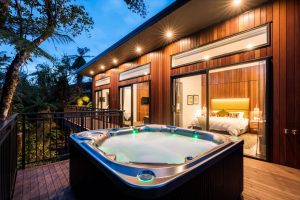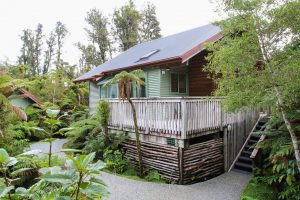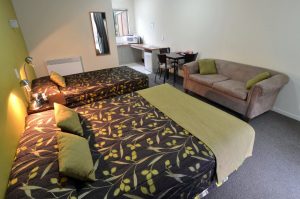Throughout New Zealand, kiwis are under threat. These shy, nocturnal, flightless birds are vulnerable to introduced predators as well as habitat destruction. Out of the five species of kiwi, the Rowi is the rarest. The Rowi happens to be a West Coast local and being locals ourselves, we know where you can go to see this little bird up close and personal.
If you’re heading to Franz Josef Glacier, don’t miss the opportunity to meet this extraordinary little New Zealander who is now sadly on a ‘nationally critical’ status.
Wildlife of the West Coast

Unlike our neighbour to the east, New Zealand has very little in the way of land mammals, as Australia does. Thankfully this means trekking through the bush in New Zealand is a relatively safe affair. You can relax knowing you’re unlikely to be attacked at any moment by a ravaging kangaroo, a deranged wombat or a killer koala. And don’t worry about snakes or spiders, they’re all friendly in New Zealand.
One thing New Zealand does have a lot of is birdlife. The lush dense rainforest of our nearest national park, Westland Tai Poutini is home to a very noisy and very diverse bird population. If you visit the wetlands of Okarito Lagoon, you may spot the rare and beautiful White Heron. A bush walk through the Franz Josef forest is abundant with birdlife like wrens, tomtits, and fantails. You may also spot the wood pigeon (Keru), Tui and the South Island Robin. And you’re more than likely to encounter the cheeky Kea trying to steal your lunch.
But our favourite bird is one you are unlikely to ever see in the wild.
Okarito Forest (just near Franz Josef) is home to the Rowi. It’s thought there are only 400 of this species of kiwi left in the wild. The small Rowi population is now battling to survive in the 11,000 hectares of Okarito Forest… and they need all the help they can get.
As they are nocturnal and very shy, your chances of spotting a Rowi in the wild are just about impossible. Your best chance of meeting this little kiwi is to visit the West Coast Wildlife Centre [link: http://www.wildkiwi.co.nz/index/}, located in the centre of Franz Josef Glacier.
Why are Kiwi removed from the wild?
The West Coast Wildlife Centre runs a successful hatch and release programme for the Rowi and Haast tokoeka kiwi. Being flightless birds kiwis are vulnerable to introduced pests that live in the area like stoats and rats. These nasty critters kill the birds and feed on their eggs. The centre works to save the birds by removing eggs from the wild. The eggs are then incubated and hatched at the centre. They stay in this safe predator-free environment until they are big enough to fend for themselves. They are then returned to the wild.
A visit to the West Coast Wildlife Centre
The West Coast Wild Life Centre is an all weather operation, so it’s a perfect option for a wet West Coast day. Your ticket purchase goes towards funding the incredible work the rangers do to save New Zealand’s iconic bird.
The centre offers visitors the chance to see the Rowi in a unique, nocturnal walkthrough area. During the hatching season, you can do a VIP tour and go back of house to the hatching and incubation area. This is a fascinating South Island experience not to be missed.
Allow some time to explore the centre. There is a glacier attraction, lots of information on the history of the West Coast and a café.
Is the kiwi programme working?
The 2014/15 hatching season was incredible successful for the team at the West Coast Wildlife Centre. They reported 59 Rowi chicks were safely hatched and released to safe reserves throughout New Zealand. The team also hatched 20 Haast tokoeka chicks, some ending up at Orokonui Ecosanctuary near Dunedin.
The team at the West Coast Wildlife Centre do an amazing job and they have a huge amount of knowledge to share. This is one Franz Josef Glacier activity that you don’t want to miss out on. After all, for most of us this is the closest we’ll get to a Rowi.




